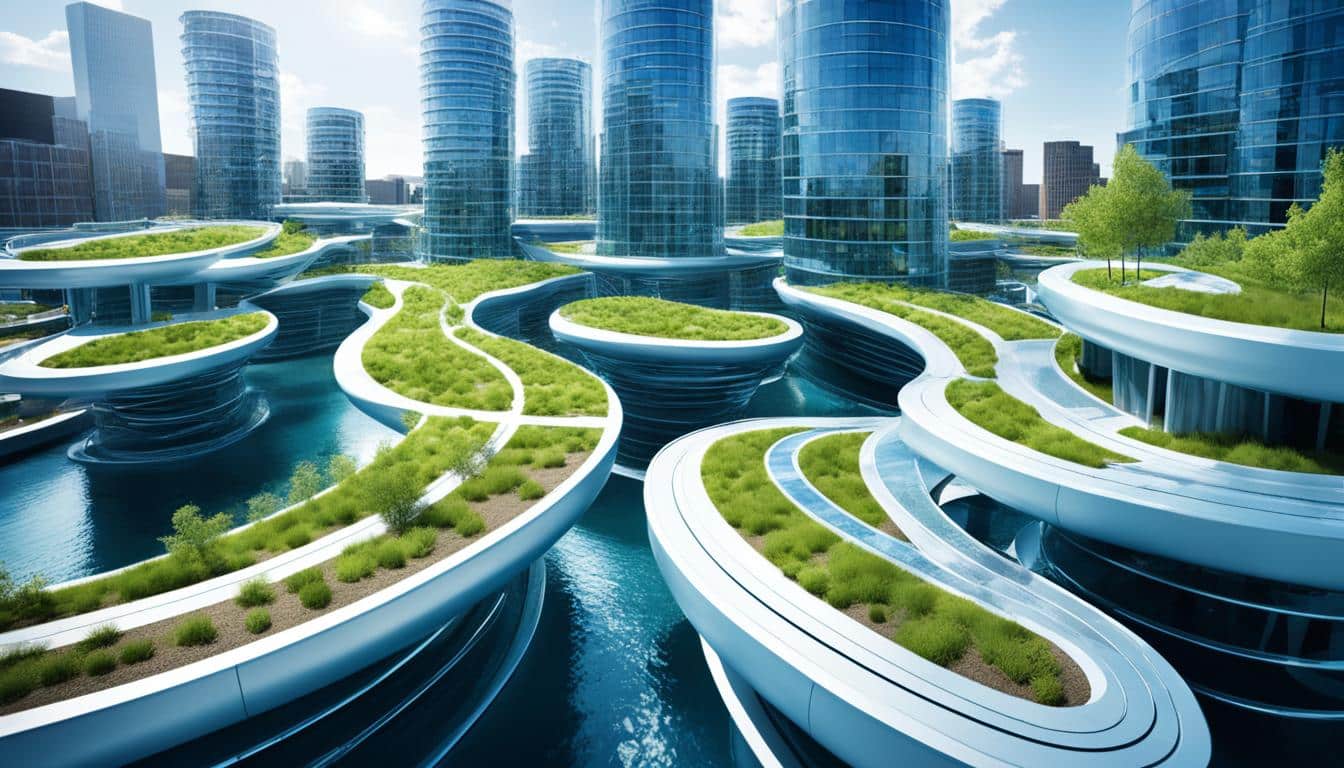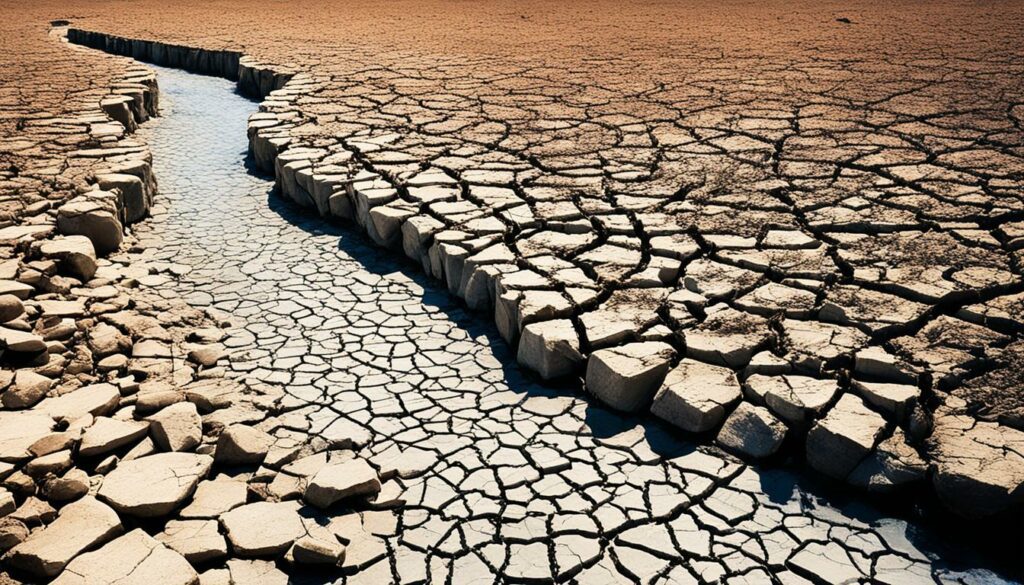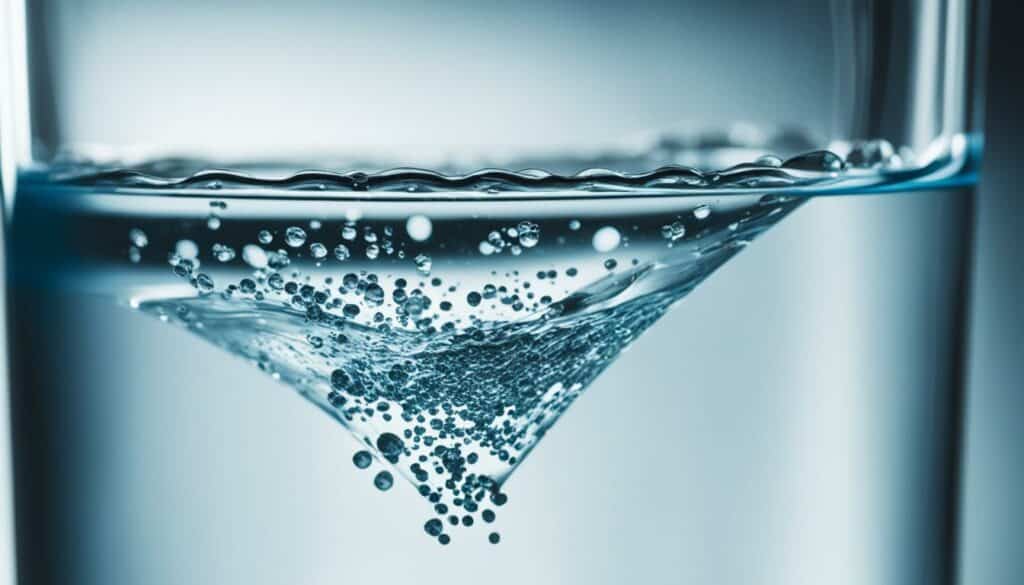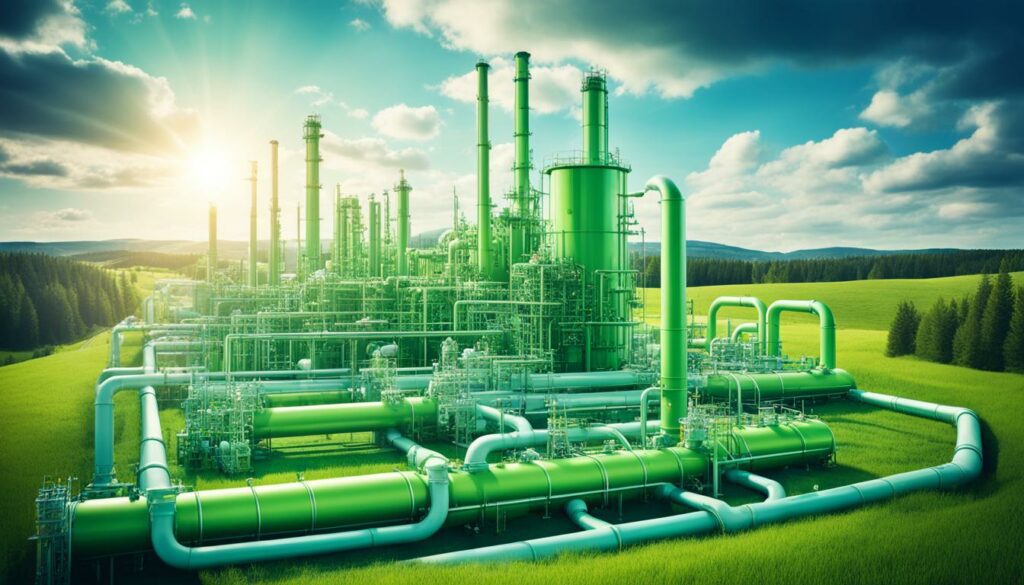Menu

In 2024, drinking water treatment plants (DWTPs) will invest a lot in tech for easier plant management. Water management has gotten harder due to climate change, more people, tech advances, and cyber threats. This year, water utilities and businesses will use digital tech more. This move will make things run smoother and face issues like greenhouse effects and polluted water, especially by PFAS. People aim to be greener by making clean energy and use innovation to handle water better for everyone, as the United Nations wants. Although they’re spending more, managing their budgets is tough. They need to fix old structures and be ready for crises. They must also fight lead and copper to make sure water stays safe and enough for all in 2024.
In 2024, focusing on sustainable water practices is key for industries and utilities. They are upgrading systems and using smart tech. This helps manage water resources better. We will look into these important steps and practices.
The water industry is taking a varied approach to be more sustainable. It heavily relies on digital tools such as AI and IoT sensors. These help in managing water with more control over quality and quantity. This way, every water drop is used efficiently, which is great for our long-term goals.
Looking at wastewater, there’s a trend to focus on reuse and advanced treatments. Technologies like advanced oxidation, and biological methods improve water quality. This not only saves money but it’s also good for the environment. It reduces the release of bad water, supporting water conservation efforts.
Ecological conservation through water management is a win-win for society and nature. By using tech like digital twins and IoT sensors, we can manage water better. These, along with local wastewater treatments, offer flexible solutions. They help keep a balance in nature.
| Sustainable Practice | Technology Used | Ecological Benefit |
|---|---|---|
| Digital Water Management | AI, IoT Sensors, Digital Twins | Enhanced efficiency and water quality control |
| Wastewater Reuse and Treatment | Advanced Oxidation, Biological Remedies | Improved water quality, cost reduction |
| Decentralised Treatment | Modular and Mobile Systems | Flexibility, resilience, and lower environmental impact |
The push towards smart tech and new treatments is big in 2024’s water sustainability. These efforts fit well with our sustainability goals. And they help in better managing water resources. Putting nature first will help tackle our water challenges effectively as we move forward.
Climate change notably affects how we manage water in 2024. Extreme weather is more common, challenging industries and utilities. They must boost their systems to keep water flowing during disasters. This means using better forecasts, stronger pipelines, and effective emergency plans.
Climate change brings longer droughts and heavier rains. This leads to more flash floods, which harm economies and people worldwide. Alerts and early warning systems are vital. They help analyse risks fast and warn emergency teams in real-time. Tools like Decision Support Systems (DSS) and Early Warning Systems (EWS) are vital for managing these crises and keeping water safe.

Adapting our water systems to climate change is crucial. It’s affected traditional ways of handling data. Using models for water quality during droughts is now necessary. So, gathering and handling good data is vital, leading to investing in new tech like big data and AI.
Being ready for extreme weather needs solid emergency plans. These plans help in tough times to keep water flowing and keep people healthy. Adding new tech and faster data helps these plans work better. This makes decision-making faster when facing extreme weather threats.
Advanced tech and good planning are key to handling climate change effects on water. Through big investments and digital changes, the water sector can become more resilient. This means better and stable water for everyone.
In 2024, the water sector faces tough challenges like water scarcity and growing demand. But, it’s using high-tech solutions to tackle these issues. AI and IoT technologies are changing the game, offering smart tools for today’s needs.
AI is making a big difference in managing water. It’s teaming up with IoT sensors to help utilities watch and control water systems better. This combo lets companies use data to save water and stop system problems early. These advances help meet current needs, as well as future goals for a greener world.
Modern water utilities need advanced systems to measure water use hour by hour. These systems make billing more accurate and help manage resources better. As smart water tech evolves, having meters like these means less wasted water and catching problems right away. This smart way of working helps utilities keep customers happy and be more open about their operations.
In 2024, finding and stopping water leaks is crucial in smart water tech. New tools, like those using sound sensors and complex maths, can find leaks very accurately. They do more than just save water; they also stop big damage to water pipes. Using these tools is a smart move to save natural resources and avoid messing up service. Since we need water more than ever, managing leaks well is key for water companies.
Using water wisely is crucial for our future plans in 2024. Thanks to new tech, we can save and use water better. This tech is changing how we look after our water, making sure it’s always ready for us.
Efficient water use needs technology. Around the world, new businesses are leading the way in saving water. They’re coming up with great ideas, with lots happening in the US and the Netherlands. These new digital tools are among the top ways we’ll save water in 2024. They make water management smoother and cheaper, fitting right into how we already do things.
Places that grow crops have a big chance to save water. Using smart tech, farmers can avoid wasting water. They get real-time info and use machines to water their fields just right. This makes food grow better and uses less water. It’s a big step forwards in taking care of water and how we farm for the future.

Over 3771 new startups and growing businesses worldwide are focusing on water-saving ideas. They’re using digital tools to make water systems work better. These include smart meters and maps that help spot leaks fast. Finding and fixing leaks is key to using water in a smart way.
| Trend | Details |
|---|---|
| Digital Water Management | Named a top 8 trend for 2024, it’s all about using digital ways to save water better. |
| Smart Irrigation Technology | Uses new data and tools to water crops just right, saving water and helping farms grow better. |
| Advanced Metering Infrastructure | Makes watching how we use water better, leading to smarter bills for water use. |
| Leak Detection Tools | Important for finding and fixing leaks, stopping water from being wasted. |
By bringing these new tech ideas together, we are starting a bright future for water. Every little bit of water we save helps make a better world for us all.
In 2024, water utilities are facing big economic challenges. Costs of running and keeping up with rules are rising. The prices of needed chemicals for clean water are going up. This is tough on the water providers. They are also using more energy, which adds to the money worries. They are working on making their places run better by using digital transformation. This helps to manage things smarter and save money, but the economic stress is still a big problem.
The upsurge in chemical costs is hitting the utilities’ pockets hard. They also need to look out for their staff and resources. This makes the money situation even more difficult. On top of this, they have to follow new rules about lead and copper. This is to make sure the water is safe and they meet the standards.
Water services are turning to new technologies to lower costs. Things like automation and the Internet of Things (IoT) can help. They allow for more efficient operations. Big data and special software can make things run smoother. Digital twins are a great way to do this too. Also, the utilities are putting more into keeping their systems safe from hackers. This protects the water services from being interrupted by cyberattacks.
“Managing the economic pressures on water utilities in 2024 requires a multifaceted approach, combining technological advancements, strategic investments, and stringent regulatory adherence.”
With all the money problems, utilities are spending more on cyber protection. Keeping the water safe from cyber threats is a top priority now, alongside managing the budget well.
The water industry is moving towards treating water closer to where it’s needed. This new approach helps cut the costs of moving and treating huge amounts of water. It’s a way to deal with money issues in the water sector.
To tackle the financial troubles, water utilities need new ways to save money. This is key to providing safe water for everyone, even in hard financial times.
In 2024, we’re seeing more green infrastructure used for managing water. This highlights the value of creating green spaces in cities and managing stormwater. Towns are finding new ways to plan their cities as heavy rains happen more often.

Green spaces in cities are now key. Take Grand Rapids, MI, for instance. About 20 city workers got a Green Infrastructure Certification to help urban green areas. Companies like Steelcase are also doing their part. They’ve put in bioswales to filter rain at their headquarters, showing a commitment to the planet.
Rain gardens and bioswales are in demand for handling extra water. For example, a 24,000-square-foot trail used Flexi-Pave, a porous material made from old tires. These methods are not only good for the environment but they also save money when making urban green spaces.
Systems that manage stormwater are crucial in cities. Kalamazoo, MI, got $38 million for downtown and creek improvements, thanks to federal aid. Benton Harbor, MI, got a grant for the Ox Creek project from NOAA.
The use of green water solutions could save loads of money every year. It might cut down 29.8 million tonnes of CO2e and store 4.2 million tonnes of CO2e each year for 40 years. This also boosts the carbon credit market, making green initiatives more profitable in the long run.
Green infrastructure plays a big role in cities worldwide. Cities like Berlin, Melbourne, and Philadelphia are shifting towards being water-sensitive. Their efforts show the success of these green practices.
In 2024, the water industry will change a lot. Technology, being green, and working together will lead this change. This mix is making water management smarter. Drinking water plants will invest in technology. They want to automate managing their plants better. By using data for automation, they ensure our drinking water is safe and clean.
This year, going digital in water management is key. Things like digital twins and GIS will make managing water resources better. By using these, water utilities can handle tough issues like not enough water, more demand, and severe weather.
Wastewater plants will also get a tech boost. They’ll mix new tech with better treatments to do their job better. This not only cuts costs but also makes customers happier. Big data and advanced analysis are changing how we think about using water. It gives us smart ways to manage resources.
Farming and how they water their crops will get a high-five too. They use tech to be smarter about how they water. Spain, for instance, has a program for better water use efficiency and protecting nature.
| Technological Trends | Description |
|---|---|
| Digital Twins | Creating virtual replicas of physical systems for enhanced monitoring and management. |
| Geographic Information Systems (GIS) | Deploying data-driven mapping tools to improve water resource management. |
| Internet of Things (IoT) | Utilising connected devices for real-time data collection and analysis. |
| Advanced Metering Infrastructure (AMI) | Enabling precise water consumption tracking and management for better efficiency. |
In 2024, we’ll also face flood prevention head-on. This will mean better devices and smarter ways to predict floods. These steps are vital because of the changes our climate is making in water systems.
Overall, using more tech is a big change for water management in 2024. It’s about being smart with our data for better, greener water use. Entering this digital age is our chance to make a big difference in taking care of our water, our lifeblood.
As we head into 2024, dealing with drinking water contaminants is key. The water sector is advancing by using advanced filtration technology. It’s tackling new pollutants that were not a problem before. But, this progress is costly, so managing the expenses is crucial.

Problems like PFAS need attention now. It’s estimated to cost $13.5 billion in cleanup costs over seven years. This challenge is happening as a strict deadline approaches: lead and copper must be removed from water by 2024. It shows how much pressure there is on making sure our water is safe.
Advanced filtration is a big weapon in the fight against drinking water contaminants. New tech, like real-time water checks by Waterson and special membranes by Inosep, are leading the charge. Indian company Earthy and Bygen Activated are also making waves with their unique approaches. They’re raising the bar in the water cleaning industry.
As new pollutants show up in our water, we need to stay alert. Things like PFAS are tough to deal with using regular methods. So, the sector is now focusing on finding more advanced ways to deal with these issues.
Keeping water pure costs a lot. US utilities are facing increasing costs for different aspects, from staff to the supplies needed. Balancing this with the need for new, affordable cost management strategies for water purity is complex. The hope is, changes in tax policy might lead to more funds for vital technologies, like those for green hydrogen.
| Contaminant | Projected Cleanup Cost | Emerging Technology |
|---|---|---|
| PFAS | $13.5 billion | Advanced Filtration Systems |
| Lead and Copper | NA (Elimination Deadline 2024) | Polymer and Biomimetic Membranes |
Dealing with these contaminants is vital for public health. It also matches the progress we’re seeing in technology for managing water, like digital twins and the Internet of Things (IoT). These tools make removing pollutants more effective. They also help us be ready for new threats.
As we head into 2024, the cybersecurity in water utilities realm has seen big changes. The EPA dropped its plans for cybersecurity rules in public water. This was due to strong pushback from industry and some politicians.
In 2023, Kaspersky noted high risks for water supply companies. They were among the most targeted by cyberattacks. In only half a year, there were four major incidents. Attackers use weak points in OT systems to get in, risking data safety in water utilities.
Groups like Volt Typhoon and Cyber Av3ngers have hit U.S. drinking water systems. The latter’s ties to Iran used simple tactics like unchanged passwords. This shows a big gap in system security.
Experts fear cyberattacks could harm water quality and treatment. This might lead to health emergencies. To tackle these challenges, we need a strong and wide setup to handle cyber threats. The Cybersecurity for Rural Water Systems Act of 2023 is a good start, allocating $7.5 million for rural systems’ security.
The AWWA and NRWA stopped the new cybersecurity rules from starting. They suggested voluntary checks and using the NIST framework to assess risks. They push to make operators and governments more aware of the dangers.
The water sector faces tough odds due to scattered, outdated tools. Over 150,000 utilities are under pressure to up their digital defences. With little funding, it’s hard to fight against major cyber threats. This makes tailored and more investment in cybersecurity crucial for water utilities’ safety.
In 2024, the green hydrogen sector is gaining fast ground in the energy market. It uses water in a key step, showing its importance for both energy and the planet. With new advancements and support, clean energy is changing for the better.

Water plays a key part in making green hydrogen, which is picking up worldwide. It’s turned into hydrogen and oxygen using renewable power in electrolysis. This not only advances sustainable hydrogen but also shows we can use water well. If we shifted completely to green hydrogen, we’d only need 1.8% of all water used.
New tech in making green hydrogen is pushing the industry forward. For example, HY2GEN’s SUNRHYSE and Alchemr’s AEM electrolyzers are making big steps. HiSeas Energy’s wind turbines at sea are also in the game. And, H2B2’s EL580N plant can make a lot of hydrogen every day. This shows how big the potential is.
Hydrogen fuel offers clear economic benefits and opens up many jobs. It could reduce a quarter of the CO2 we emit globally. Green hydrogen is also making big bucks, as shown by Thyssenkrupp Nucera. Big countries are putting a lot into this, like China and Japan. They plan to beat their old production records and set up major facilities. It’s a sign of a big, green energy change.
Below is a table showing some major green hydrogen news and upcoming plans:
| Company/Project | Technology/Capacity | Highlights |
|---|---|---|
| HY2GEN’s SUNRHYSE | 30 MW Electrolysis Plant | Powered by solar energy |
| Alchemr’s AEM Electrolyzers | Up to 100 MW | High-efficiency hydrogen production |
| H2B2’s EL580N | 1,251 kgs/day | Large-scale electrolyzer |
| Thyssenkrupp Nucera | 2.2GW Project | $23 million profit in 2023 |
| HiSeas Energy | Offshore Wind Turbines | Utilised for hydrogen production |
In summary, green hydrogen is a game-changer for future energy. It brings great tech achievements and benefits for the economy and the planet. The green hydrogen field is full of promise as we move towards cleaner energy ways.
In 2024, decentralised water treatment and local wastewater solutions are very important. They let communities and industries treat their water their way. This makes things more flexible and able to change with the times. It’s key for dealing with growing cities and climate shifts.
More and more, places are solving water issues close to home. This helps cut costs for chemicals, workers, and energy. It lets each community deal with their own water, lessening the need for big, central systems.
Modular water systems bring many pluses. They ease the load on big systems and cut costs. Built for change, they help water services keep up with needs, especially in faraway places. Plus, they’re good for the environment because they save energy.
| Advantages | Impacts |
|---|---|
| Flexibility | Adapt to various scales of demand |
| Scalability | Grow with community needs |
| Cost Reduction | Lower energy and infrastructure costs |
| Sustainability | Promote eco-friendly practices |
Decentralised water and wastewater solutions show the water sector is moving forward. Modular systems help us keep improving, offering better and better ways to help communities worldwide.
In 2024, water management has seen big changes thanks to artificial intelligence applications. AI can analyse huge amounts of data. It finds new patterns, which is changing how water companies tackle problems. This move to AI is making water management smarter, from making better decisions to keeping things running well. 
Intelligent water systems are a big deal. They use automation and controls to manage water better. Water treatment plants are turning to AI to run more smoothly and produce better quality water. This not only helps make things work better but also pushes forward water management to meet 2024’s needs better.
Other tech like IoT and big data work with AI to manage water in many ways. For example, these tools help wastewater plants increase their efficiency and treat water better. AI is also key in farming to ensure we have enough food by managing resources well.
As AI gets more central in water management, companies are focusing on keeping it safe from cyber threats. By using AI, these utilities are working to be more sustainable and ready to handle complex challenges. They aim to be resilient and precise in a changing world.
Looking ahead, AI has a bright future in water management post-2024. It helps water utilities be more sustainable and reliable. This promises a better way to manage water in the years to come.
In 2024, we’re finding new ways to deal with water scarcity. We’re using new methods to recycle water, improve desalination, and check water from afar. These steps are key in using water smarter and keeping it sustainable.
Using water again is a big part of saving it. Right now, 80% of used water just goes back into nature without getting treated. But now, new tech like nano catalyst reactors and algae treatments can clean up this water. This lowers pollution and the need for new water.
Making seawater drinkable through desalination is another big help. With greener desalination systems, we can make this process better for the planet. Since 2024, we see a major push towards these eco-friendly ways, like using membranes and new purifiers. It’s all to ensure we can meet the world’s thirst for water in a way that’s kind to earth.
Now, we can keep an eye on water from afar thanks to AI and IoT. This means we can manage water better and stop it from being wasted. Companies like Fluid Analytics Inc. and Shayp offer tech that helps find urban water problems and fix leaks quickly.
| Key Innovation | Benefit |
|---|---|
| Water Recycling Methods | Reduces pollution and pressure on freshwater resources by reclaiming wastewater. |
| Desalination Technology Advancements | Provides cost-effective and environmentally friendly potable water solutions. |
| Remote Water Monitoring | Facilitates proactive resource management and optimizes water usage through AI and IoT. |
US water utilities face big hurdles to meet new lead and copper rules by 2024. The LCRI wants lead service lines switched in a decade, speeding up the need for better infrastructure. Now, even smaller community systems must tackle the same problem.

The LCRI would make the safe level of lead in water stricter, from 0.015 mg/L to 0.010 mg/L. Water systems that go over this level three times in five years must tell the public and offer filters. This aims to protect more people from lead dangers.
To hit the new goals, water systems need to pick the higher lead level between the first or fifth liter when testing taps. Where there are lead lines, this choice helps get a true lead level. States must also set the best water quality rules for systems using chemicals against lead. These rules mainly focus on systems for 10,000 to 50,000 people. It means careful watching and adjusting of these chemical treatments to stop lead and copper from getting into the water.
Teaching people about lead and copper risks is now a big part of the rules. Water systems must now talk more with us about these dangers and how to avoid them. They should share info and tips to help keep everyone safe.
shows a great way to deal with these regulation changes. They use Esri’s Lead Service Line Inventory to quickly collect and handle data. The Greater Johnstown Water Authority also uses new mapping tech well. This shows the power of using new ideas to meet the rules.
The 2024 deadline for the Lead and Copper Rule Revision is fast approaching. Water service teams are working hard to find where the lead pipes are. They are making full lists and planning how to replace them. This work is key to keeping us safe from lead and meeting the new water rules.
In 2024, water management is evolving fast. This change is because of new tech, the push for sustainability, and adapting to climate changes. The costs, like a future $13.5 billion to fix PFAS in water, show the big money struggles. There’s a big need for clever money and operation ways to manage water well.
Using small water and wastewater treatment setups is picking up. They’re easy on the budget and adaptable for our homes and jobs. The use of small, modular water systems is growing quickly, and digital water tech is also helping save money. This means we can get better at working and providing services.
Green hydrogen making is a big new chance, but it needs tax issues sorted first. Fixing these taxes could help us reach goals for cleaner energy. Also, by 2024, everyone has to follow new rules about Lead and Copper. This highlights the need to update old systems and bring in new tech.
We’re in a time of big change for water, with new rules, smart tech, and better money handling. This mix will plan how we use water better in the future. This journey shows how smart and ready the water industry is in facing new problems. Together, we’ll make sure water use is smart and sustainable for the times ahead. It takes everyone working together, sharing skills, and thinking ahead.
In 2024, we see key trends aiming to make water management better. These include new ways to save water, using digital tech, and being kind to the environment. Such trends help save money, make better use of water, and face tough times with enough water.
Sustainable water practices in 2024 involve reusing wastewater and treating it again. This makes sure we use water in a smart way. It also means caring for nature and using new earth-friendly building. They help meet our needs and protect our planet.
Climate change makes managing water harder. It brings more and stronger storms. This means we need better plans and stronger buildings to keep water safe and clean. These efforts are important for everyone’s well-being.
2024 sees new smart water tech using AI and the internet to manage water better. Systems to check water use more carefully are being rolled out. There are also tools to stop leaks sooner.
Smart technology means we can use water better. For example, in farming, we now have systems that check the weather and water crops just right. This helps not waste water and grow better food.
Rising costs are giving water companies a hard time. Things like energy, chemicals, and paying workers more all add up. They are finding new ways to use money wisely without making water less safe or breaking the rules.
Green ways of building, like parks and clever systems to manage rainwater, help look after our rivers and keep our cities strong against floods. They mix plans for buildings with making nature a part of our daily life, helping us keep water clean and safe.
Keeping water clean has its own set of big problems. New types of pollution, the high price of making water clean, and finding enough money to keep water pure are tough issues. Solving these is key to looking after everyone’s health.
Keeping the internet safe is a must for water companies. Without good protection, anyone could mess with our water or see private info. Using strong codes and watching over the network helps keep things running and safe from cyber bad guys.
Making green hydrogen needs water and it’s good for our economy and our world. This new way to make energy can help water businesses grow and make our future greener.
Small water treatment centres are a smart choice because they can grow as we need them. They save money, don’t damage the environment, and don’t make our crowded cities problem worse. They are a good way to solve today’s water issues.
AI is changing the way we handle water by making decisions smarter, keeping things working well, and managing water better. It’s like having a bright helper that looks at lots of info and tells us what to do to keep water safe and flowing.
To fight not having enough water, we now think about reusing water, making sea water clean and paying close attention to what our sensors tell us. These new ways to deal with water mean a better and long-lasting water supply for all.
Following the rules about lead and copper is hard for water companies. They must quickly fix old pipes and find new ways to clean water. Doing so is vital for everyone’s health and safety.